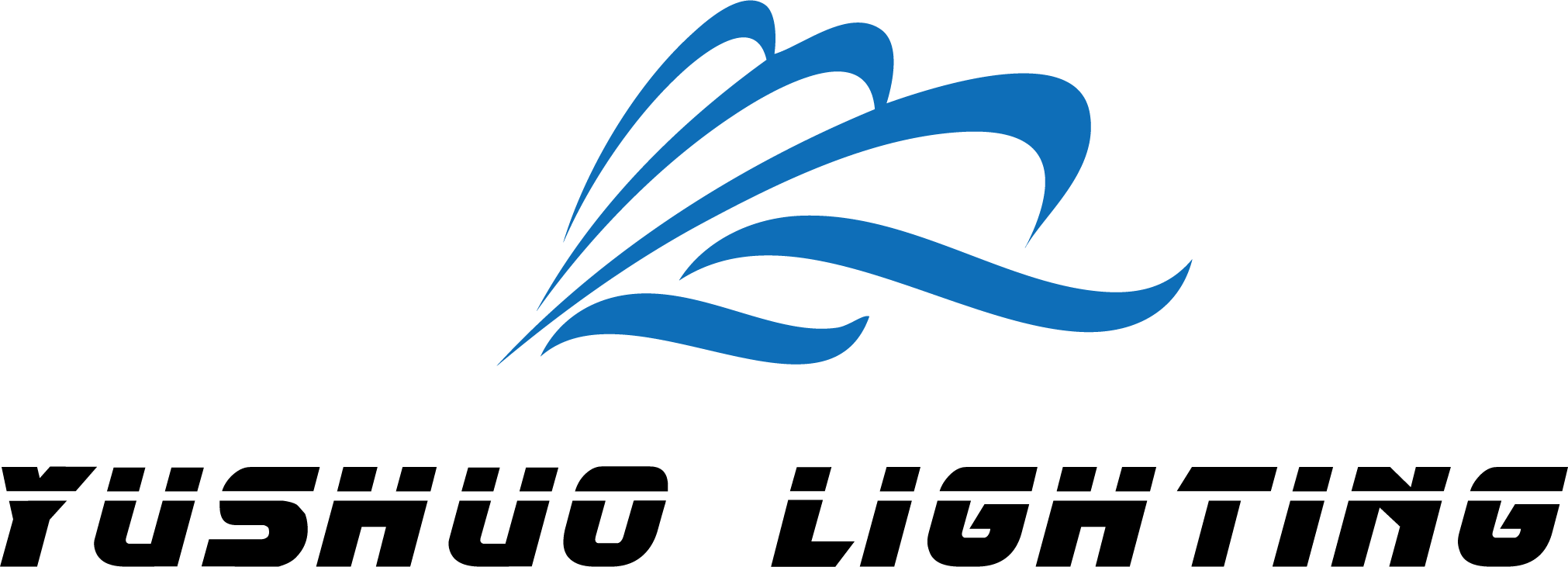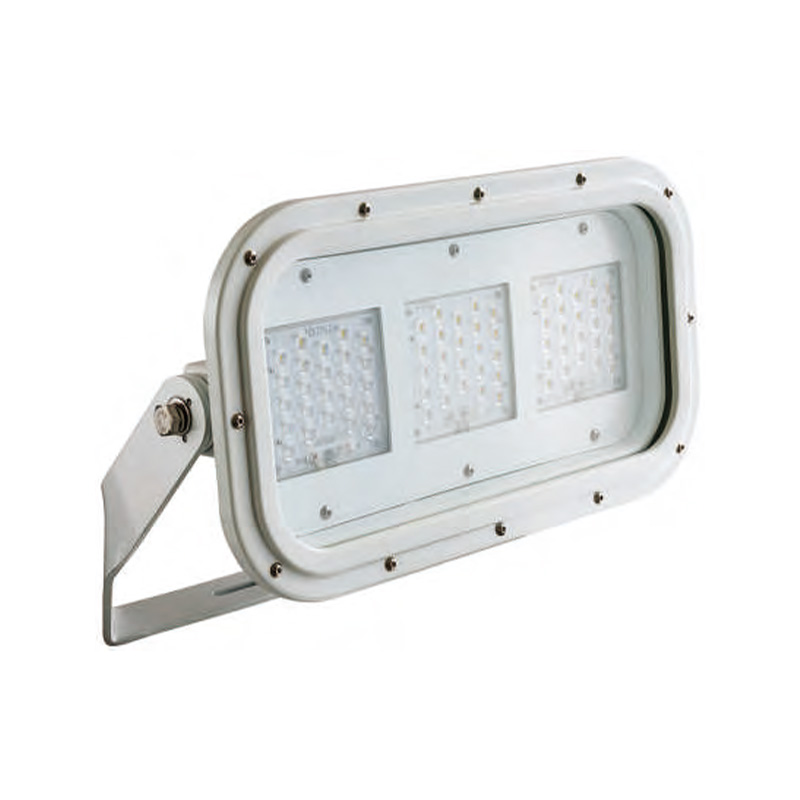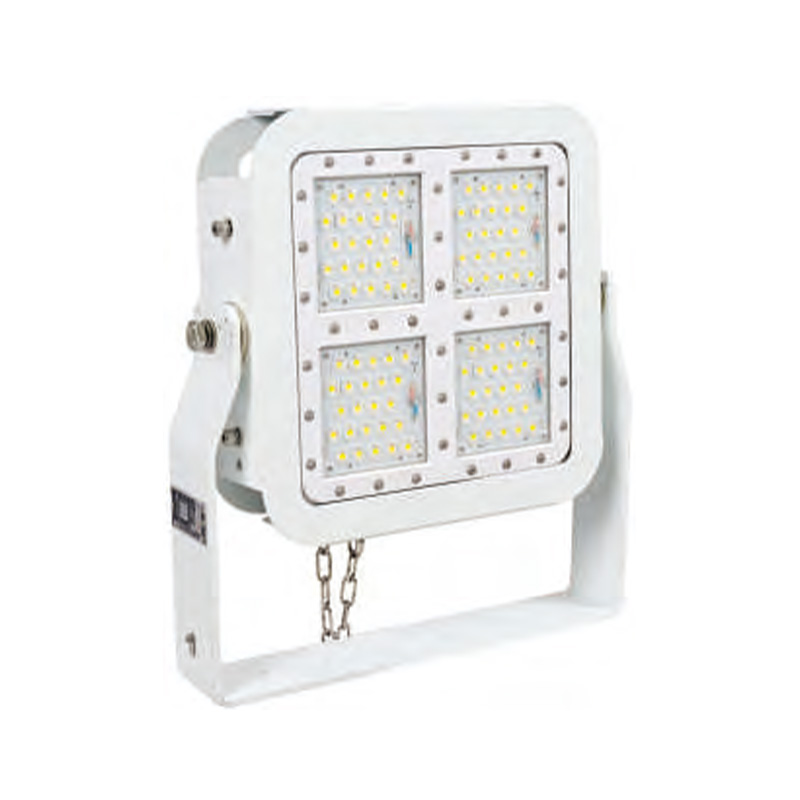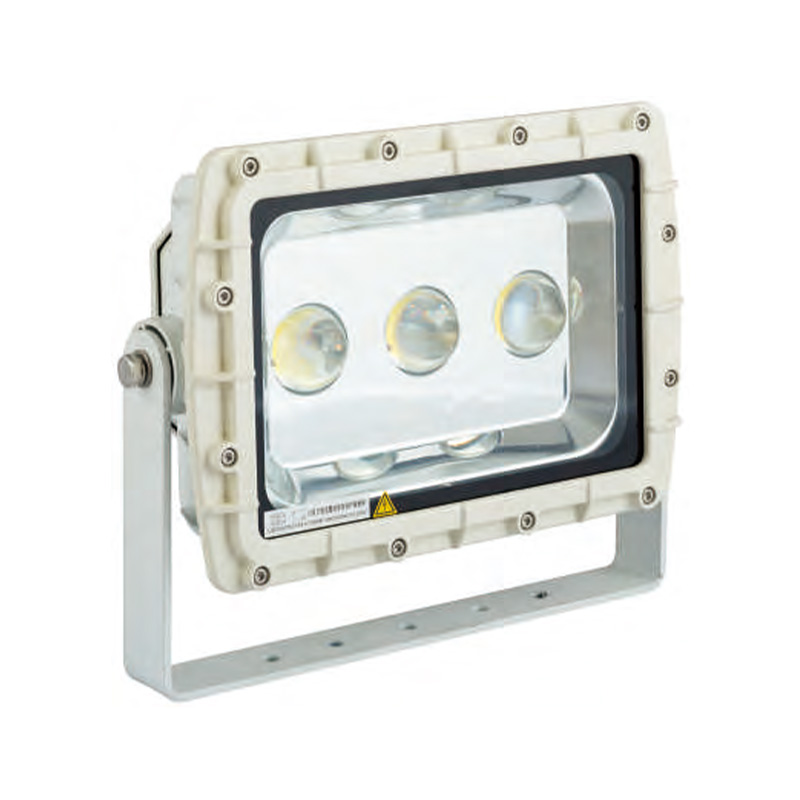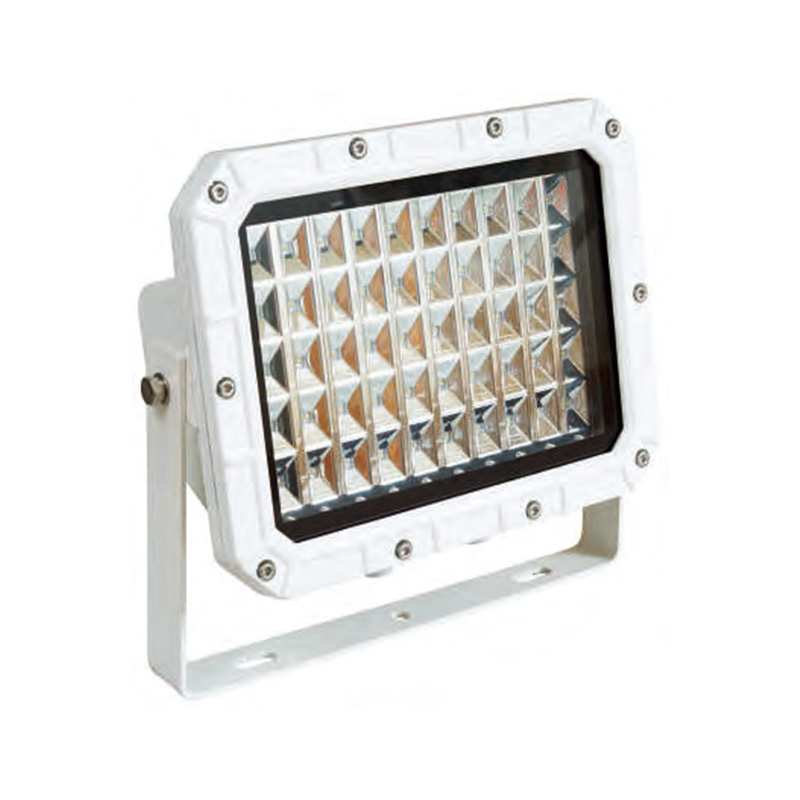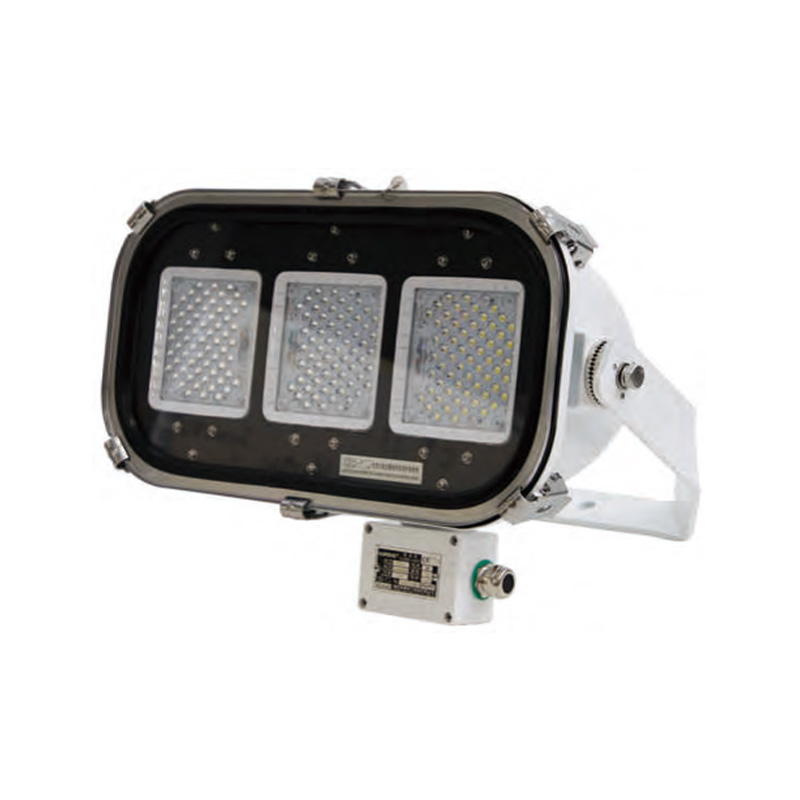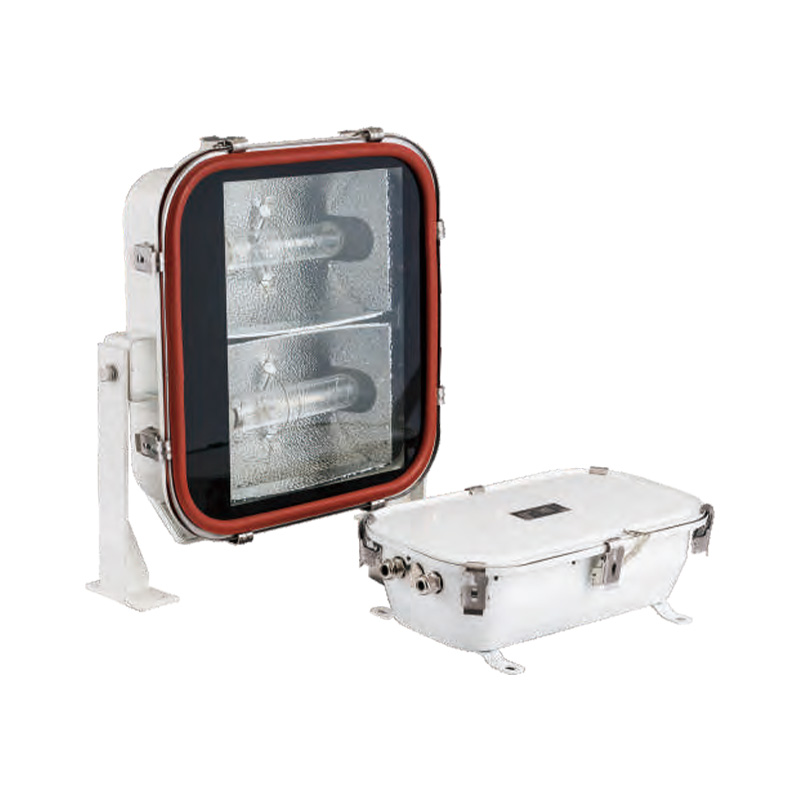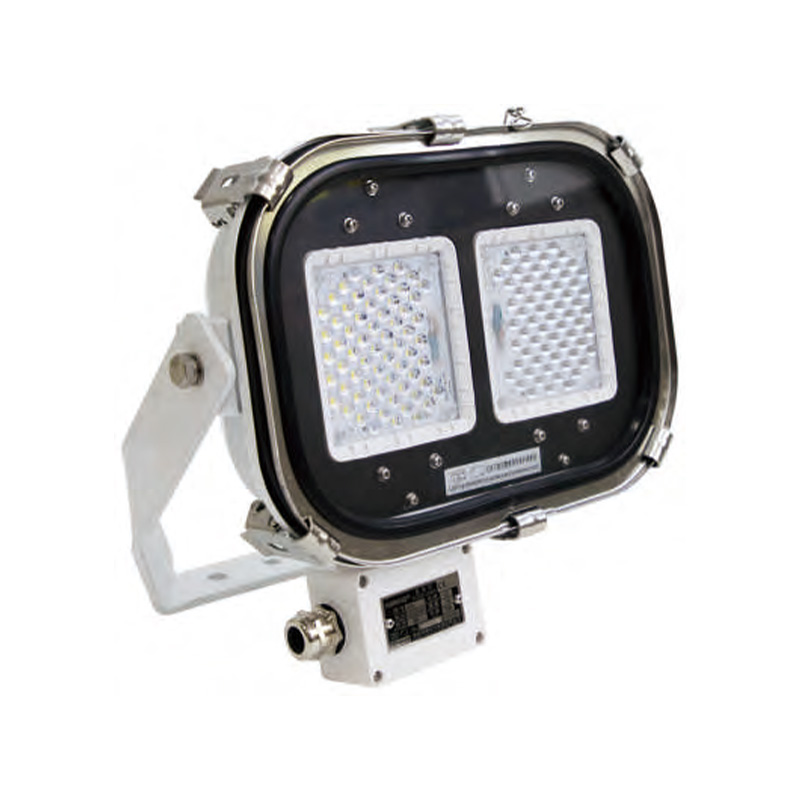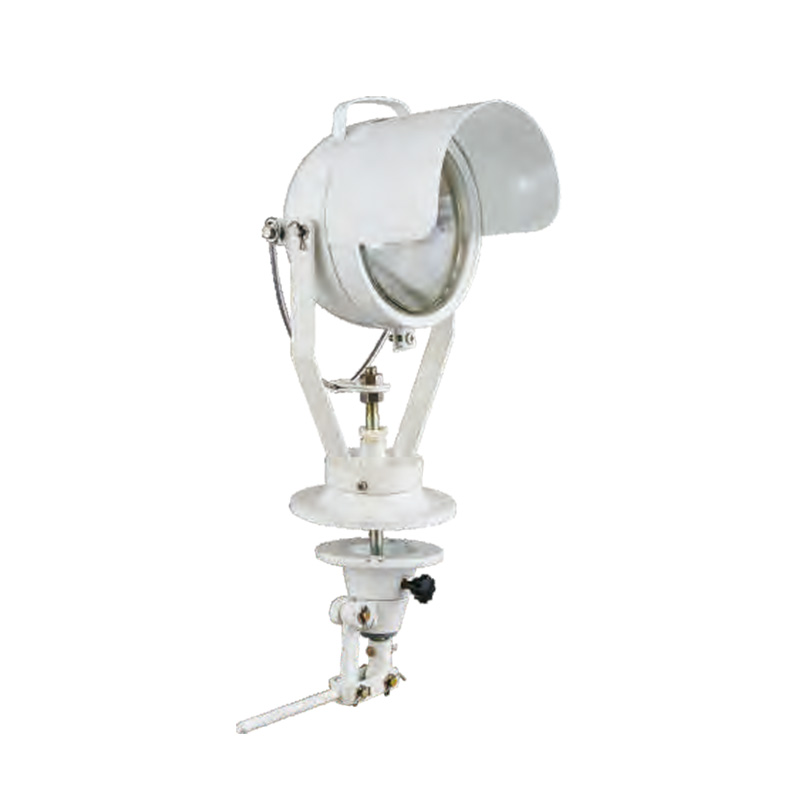Preventing Marine Spotlights from Shaking in Strong Winds & Waves
When sailing at sea, strong winds and waves will seriously affect the stability of marine spotlights, affecting navigation safety and operating efficiency. To ensure its reliability, we need to take a comprehensive approach from installation to material selection and maintenance. This article provides technical insights to prevent marine spotlights from shaking in harsh marine conditions.
Table of Contents
Selecting the Right Installation Location
Choosing the correct mounting position is crucial for maintaining the stability of marine spotlights. The midship section is generally more stable than the bow or stern, which helps reduce excessive vibration caused by waves and wind. Spotlights equipped with remote control functions should be installed within easy access, allowing operators to make quick adjustments when necessary. Additionally, it is important to consider environmental factors—avoid placing spotlights in areas directly exposed to seawater spray or high temperatures, such as near engine exhaust outlets, as these conditions can accelerate corrosion and reduce lifespan. Finally, the installation must comply with maritime regulations, including COLREGs and IMO guidelines, ensuring that the placement does not interfere with navigation lights or signaling equipment.
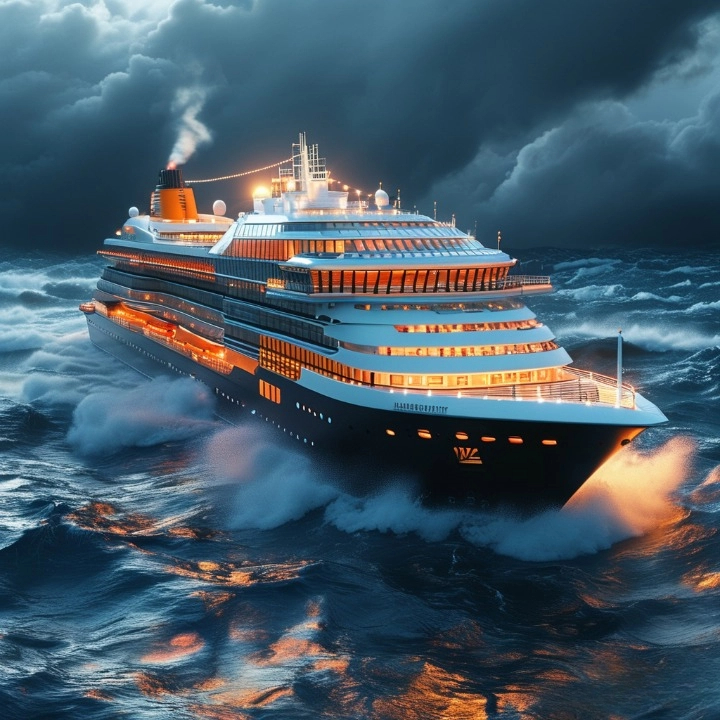
The selection of installation location is the first step to ensure the stability of the marine spotlight.
Use High-quality Fixtures
The quality of the fixture directly affects the stability of the marine spotlight for boats. Here are some suggestions for choosing and using fixtures:
| Property | 304 Stainless Steel | 316 Stainless Steel |
| Composition | 18-20% Cr, 8-10.5% Ni | 16-18% Cr, 10-14% Ni, 2-3% Mo |
| Corrosion Resistance | Moderate | High (especially against chlorides) |
| Marine Suitability | Suitable for mild conditions | Ideal for high salinity environments |
| Salt Spray Test (ASTM B117) | ~96 hours before signs of corrosion | ~1000 hours before corrosion onset |
Why Choose 316 Stainless Steel?
In a salt spray test (ASTM B117), 316 stainless steel lasted over 10 times longer than 304 stainless steel before showing corrosion, making it the superior choice for marine spotlights.
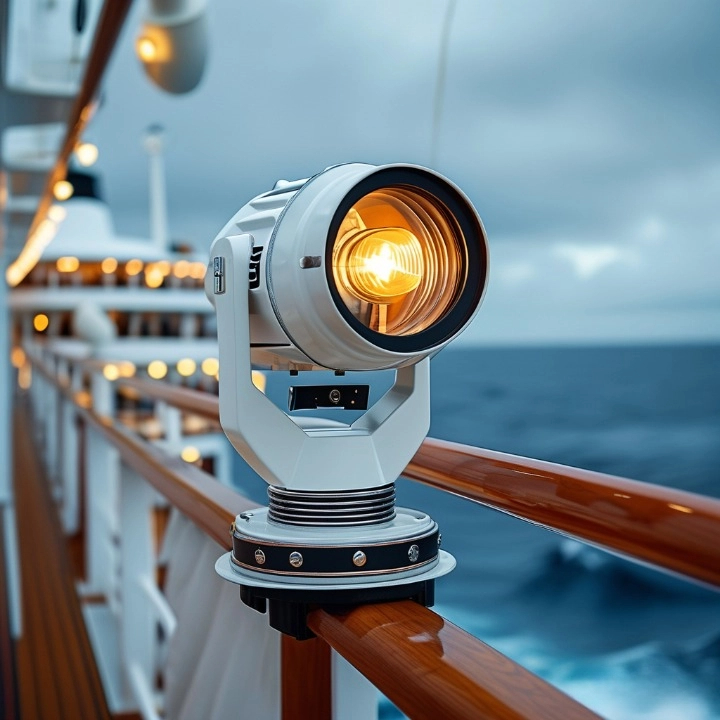
Ensure a Secure Installation
In order to ensure the stability of marine spotlights in harsh sea conditions, the following measures must be taken during installation:
First, adopt a multi-point fixing method to ensure that the spotlight can be stably supported in all directions. For example, using four screws to fix the spotlight from different angles can significantly improve its stability. Second, use anti-loosening washers or locking nuts on the screws to prevent the screws from loosening during vibration. Check the tightness of the screws regularly to ensure that they are always in a tight state. Especially after long-term sailing or harsh sea conditions, the fixtures should be checked and maintained in time.
By selecting suitable materials and taking effective installation measures, the stability and reliability of marine spotlights in strong winds and waves can be ensured, thereby extending the service life of the equipment and improving its lighting effect.

Multi-point Fixation
Multi-point fixing is a key measure to ensure the stability of marine spotlights. By fixing the spotlight at multiple positions, its stability in strong winds and waves can be significantly improved. Specifically, the use of multi-point fixing methods, such as using four screws to fix the marine LED spotlight from different angles, can ensure that the spotlight can be stably supported in all directions. This design can not only effectively prevent the spotlight from shifting or shaking when the ship shakes, but also provide stronger impact resistance in harsh sea conditions.
The design of multi-point fixing usually includes the use of multiple fixing points, which are evenly distributed to ensure that the weight and pressure of the spotlight can be evenly distributed. For example, on the mounting plate of the ship, multiple threaded holes can be designed to fix the mounting bolts through threaded connections to achieve the effect of multi-point fixing. This design also has similar applications in architectural performance spotlights, and the stability and reliability of the equipment are ensured by multi-point fixing.
By adopting a multi-point fixing method, the stability of LED marine spotlights in strong winds and waves can be significantly improved, while the service life of the equipment can be extended. This design is not only suitable for marine equipment, but can also be extended to other application scenarios that require high stability.
Anti-loosening Design
In the installation of marine spotlights, it is crucial to ensure the stability of the fixture, and the use of anti-loosening washers or locking nuts is a key measure to achieve this goal. Anti-loosening washers prevent screws from loosening during vibration by increasing friction. Common types include spring washers and nylon insert washers. Spring washers rely on their elastic deformation to generate continuous preload, thereby effectively preventing screws from loosening; while nylon insert washers use the high friction coefficient of nylon materials to further enhance the anti-loosening effect. In addition, locking nuts prevent nuts from loosening during vibration through special structural designs such as nylon inserts or deformed threads. For example, nylon insert locking nuts use the elastic deformation of nylon materials to ensure close contact between the nut and the screw, thereby providing additional anti-loosening protection. These designs work together to effectively reduce the loosening of fixtures caused by ship shaking and ensure the reliability of spotlights in harsh sea conditions.
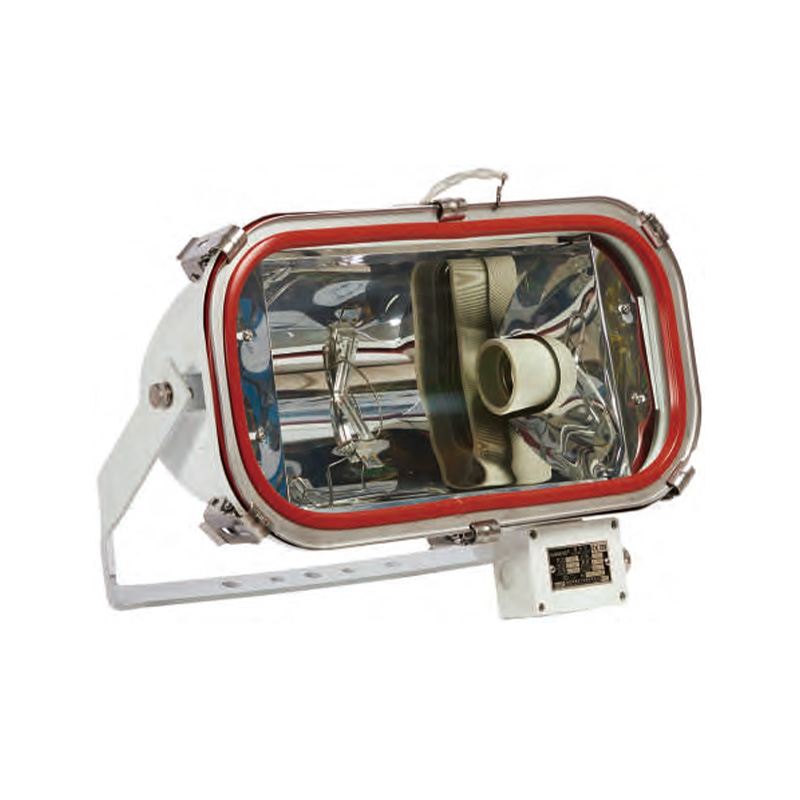
Adjust The Installation Angle
Preset Tilt Angle
When designing a ship, the tilt angles under different sea conditions are taken into consideration, including heel and trim. Heel refers to the tilt angle of the ship in the transverse direction, while trim refers to the tilt angle of the ship in the longitudinal direction. These angles are determined based on the position of the ship’s center of gravity, buoyancy distribution, and the geometry of the hull. According to the design parameters and actual use of the ship, a suitable tilt angle range can be determined. For example, a ship may have a large tilt angle in strong winds and waves, and the installation angle of the spotlight should be preset according to the tilt angle of the ship to ensure that the beam direction of the spotlight remains stable when the ship is tilted.
Ship flooding angle and heel angle: A flooding angle ship is a specially designed ship, and its flooding angle refers to the angle at which the ship’s hull begins to tilt after sinking to a certain depth. This design allows the ship to remain stable and balanced under a certain degree of tilt. When installing spotlights, the flooding angle and heel angle of the ship need to be considered to ensure the lighting effect of the spotlight when the ship is tilted.
Maritime specifications and standards: The International Maritime Organization (IMO) and the maritime safety regulations of various countries have clear requirements for the installation position and angle of ship lighting equipment. These requirements are intended to ensure the visibility and safety of ships in various sea conditions. These specifications and standards must be followed when presetting the tilt angle of the spotlight.
Ship stability assessment: The stability assessment of a ship includes calculating its center of gravity position and stability at different tilt angles. Through methods such as tilting tests, the center of gravity position of the ship in the empty ship state can be determined, thereby providing a scientific basis for the installation angle of the spotlight.
Dynamic adjustment and real-time monitoring: Modern ships are equipped with advanced dynamic positioning systems and tilt sensors, which can monitor the tilt angle of the ship in real time and automatically adjust the beam direction of the spotlight. This automated system is particularly important in strong winds and waves, ensuring that the spotlight is always pointed at the desired area and that the beam remains stable even when the ship is shaking.
The above measures can effectively prevent the marine spotlight from shaking in strong winds and waves, ensuring its stability and lighting effect in harsh sea conditions.
Use adjustable brackets
Choose a bracket with an adjustable function so that you can fine-tune the angle of the spotlight according to actual conditions during navigation. Brackets with adjustable functions allow for fine-tuning of marine spotlight components during navigation, which can effectively reduce the impact of shaking on the direction of the beam. For example, some mounts are designed with swivel and tilt adjustments, allowing crew members to adjust the angle of the spotlight manually via remote control or from the wheelhouse.
Real-time adjustment
In strong winds and waves, the crew can adjust the direction and angle of the spotlight through the remote control or the automated system in the wheelhouse. This real-time adjustment function ensures that the spotlight beam is always pointed at the desired area and maintains the stability of the beam even if the ship shakes.
Regular Inspection & Maintenance
Regular inspection and maintenance are the key to ensure the stability and performance of marine spotlights. The following are detailed inspection and maintenance recommendations:
Check the fixtures
Before each voyage, the fixtures of the spotlight should be carefully checked for looseness or damage, especially after long-term sailing or severe sea conditions, timely inspection is particularly important. Use a torque wrench to check the tightness of the screws to ensure that they meet the torque value recommended by the manufacturer. If the screws are found to be loose, they should be re-tightened immediately, and the screws and nuts should be checked for damage to prevent shaking caused by loose fixtures, ensuring the stability and lighting effect of the spotlight in various sea conditions. .
Cleaning and anti-corrosion
Regular cleaning: Clean the lampshade and lamp body of the spotlight regularly to remove salt, dust and dirt. This can be done by gently wiping with a soft cloth dipped in clean water, avoiding the use of corrosive detergents.
Anti-corrosion treatment: Check the lampshade and lamp body for scratches or cracks, and replace them in time if damaged. For marine spotlight parts exposed to seawater, anti-corrosion treatment should be performed regularly to prevent corrosion.
Wire inspection
Check the wires and plugs: Check whether the wires and plugs are damaged or aged. If the outer sheath of the wire is found to be damaged, it should be replaced in time to avoid short circuit or leakage.
Electrical connection: Make sure all electrical connections are firm and meet the marine electrical safety standards to prevent the risk of short circuit or fire.
By choosing the best mounting location, using corrosion-resistant materials, ensuring a secure installation, and performing regular maintenance, marine spotlight for boats can remain stable and effective in strong winds and rough seas. Implementing these strategies can increase navigation safety and extend the life of the equipment.ain functional and safe under all conditions. Adopting these innovative waterproofing techniques ultimately reduces maintenance costs and enhances safety at sea.
